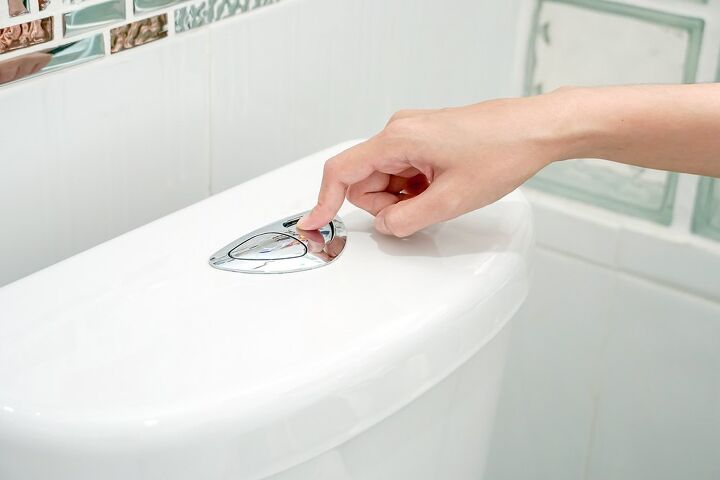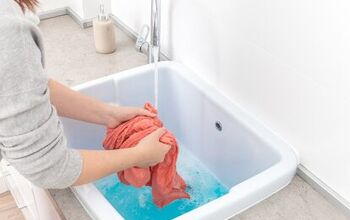Push Button Toilest Vs. Handle Flush: What Are The Major Differences?

If you’re getting ready to install a new toilet, you’re going to have a lot of options to consider when it comes to style, features, sizes, and flushing styles, too. Nowadays, flushing systems can be categorized into two main types: button flush and handle flush.
The main difference between button flush toilets and handle flush toilets can be categorized in terms of style, maintenance, eco-friendliness, price, and convenience. Button flush toilets come out on top when it comes to water conservation and overall technology, but lever flush toilets are more affordable, customizable, and easier to use.
The right choice for your bathroom really comes down to your own personal preferences and your budget, too. We’re going to dive into both of them, so you can make the right choice for the bathrooms in your home.
Do You Need to Install or Repair a Toilet?
Get free, zero-commitment quotes from pro contractors near you.

Single Flush vs. Dual Flush
There are many types of toilet flush systems, but we’re going to talk to the two most common and popular options. Button flush toilets are often called dual-flush toilets as they offer two options for flushing: a “half flush” for disposing of liquid waste and a stronger flush for solid waste.
It’s important to note that not every button flush toilet is a dual-flush, but every dual-flush is a button flush toilet. That said, the terms are often used interchangeably, nevertheless. While button flush models are newer, they are continuously growing in popularity each year.
These flushing options are not possible with a handle flush system because there is only one handle that flushes in one direction. That’s why they are also called single-flush toilets. These toilets have been around much longer, so they are the one you see more often in households and in public restrooms, too.
Button Flush Toilet Pros
Button flush toilets utilize newer technology, so they come with a wide range of advantages in terms of usability, appearance, maintenance, and more. Let’s take a closer look at the plus sides of these types of toilets.
Low-Maintenance
For the most part, the button mechanism on the toilet won’t cause many issues as long as your toilet is installed correctly the first time around. Furthermore, that button is much easier to clean on a regular basis than a lever. This is a plus because the parts for button flush toilets are a bit harder to find.
Saves Water
Push flush toilets usually offer two flushing choices with different water levels. That way, you don’t have to waste a full flush of water after just peeing. This half flush for liquid waste will usually only use 0.8 to 1.0 GPF (gallons per flush) while the full flush for solid waste uses the normal 1.6 GPF. Over time, this is about 30% of the water that single flush toilets use over time, which translates into saving more than 10,000 gallons of water every year.
Modern Style
Button flush toilets offer a newer look, which can be extremely beneficial if you have a more modern looking bathroom. These types of toilets are most often made from porcelain or plastic and can accommodate many unique aesthetics. However, it’s important to really think about what you want because these types of toilets are very difficult to modify.
Button Flush Toilet Cons
While button flush toilets are more modern and advanced, they still come with their fair share of downfalls. Before jumping on the bandwagon of the button flush design, take a look at the main disadvantages the bring to the table.
Expensive Installation
Button flush toilets are more expensive to install than lever toilets since they require more high-tech parts and complex pieces. However, they will undoubtedly save you money over time in terms of water savings.
Higher Maintenance Costs
Though button flush toilets are low maintenance, they will be more expensive to repair overall. It’s more difficult to find the parts for button flush toilets and the repairs are usually more complex when they are necessary.
Less Intuitive
Everyone knows how to use a single-flush lever toilet, and everyone is able to easily flush, too. Button flush models sometimes pose an issue in this regard. Smaller buttons can sometimes be difficult to find, especially if you place them on the wall instead of on the actual toilet. Plus, the buttons can often be harder to push for small children and elderly people.
Handle Flush Toilet Pros
If you’re considering a handle flush toilet, there are a few things you should consider. The good news is handle flush toilets will make your daily routines easier and improve your bathroom’s aesthetic, too.
More Common
Handle flush toilets are the toilets you most often see on a day-to-day basis, which means they’re much easier to operate even for younger kids and anyone with coordination issues. Moreover, this makes maintenance projects much easier because there is no shortage of spare parts available.
Comprehensive Style Options
Handle flush toilets can be modified to match any style of bathroom, which means you won’t be stuck with whatever design you originally picked. Since the design of these types of toilets are less complex overall, they are much easier to renovate.
Easy to Operate
Levers are universally easier to use when compared to buttons since it doesn’t require any exertion on the user. Plus, levers are generally always placed in the same general area, so they’re more intuitive in terms of usability.
Affordable Installation
Handle flush toilets are easier to install because they are less complex and have been around longer, so there are many different options and parts available for a simple and stress-free installation.
Handle Flush Toilet Cons
While handle flush toilets are convenient and affordable, they’re not perfect. Let’s briefly go over the main cons of lever flush toilets. That way, you know what you’re getting into before you make your final purchase.
Consumers More Water
Single-flush toilets only have one setting. That means you have to flush the whole bowl regardless of what is going down the drain. Over time, this can result in a huge waste of water. And this will lead to higher water bills and a worse impact on the environment.
Older Technology
While there are more parts available for lever flush toilets, the parts themselves are not as advanced as those in dual-flush systems. Overall, this won’t be a huge deal in terms of functionality. That said, it is something to consider if you want a more modern look for your space.
Related Questions
Can I flush the toilet when the water is off?
Yes, you can flush as long as there is water in the toilet bowl. After that has run out, you’ll need to gather water and dump it directly into the bowl. That pressure will trigger the toilet to flush, which means you won’t need to use the handle.
How many types of toilets are there?
There are many different types of toilets depending on how you categorize them. Some of the most popular options include gravity-flush, pressure-assisted, upflush, portable, single-flush, and dual-flush.
Do You Need to Install or Repair a Toilet?
Get free, zero-commitment quotes from pro contractors near you.

Final Thoughts
Choosing between a button flush and a handle flush toilet is ultimately your decision. There is no perfect solution for every customer. That’s why it’s important to do your research before you make a final decision. Mostly, you’ll want to consider your bathroom’s aesthetic, your budget, and your personal preferences for your toilet. When it comes down to it, both lever and button flush toilets are great options for different reasons.

I am a copywriter and editor based in the Las Vegas area with nearly a decade of experience under my belt writing landing pages, cost guides, blog posts, newsletters, case studies, and social media content. I have a degree in Strategic Communication and experience working in both the account and creative spheres. My goal is to always be discovering new interests and bettering myself as a writer and editor along the way.
More by Kerry Souder
























![12 Washing Machine Brands to Avoid [with Recall Data]](https://cdn-fastly.upgradedhome.com/media/2023/07/31/9075781/12-washing-machine-brands-to-avoid-with-recall-data.jpg?size=350x220)

![Standard Dining Room Table Dimensions [for 4, 6, 8, 10 and 12 People]](https://cdn-fastly.upgradedhome.com/media/2023/07/31/9074335/standard-dining-room-table-dimensions-for-4-6-8-10-and-12-people.jpg?size=350x220)
